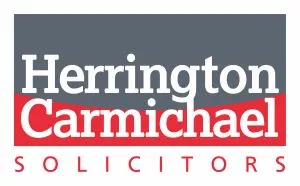Tax is a key factor when deciding how to sell an asset, and Capital Gains Tax (CGT) rates can make you consider which option to pursue.
You will usually need to pay CGT at a rate of 20% on the gain that you make when you sell shares that you hold in a company. If the shares that you hold have increased in value since you originally acquired them, this can leave you with a substantial tax bill when you decide to sell.
Some of you may not be aware that by selling a controlling interest in your company to your employees, you can obtain full relief from CGT when you sell your shares.
How it works:
An Employee Ownership Trust (EOT) is a trust that allows employees to take a role in the running of the company. Implementing an EOT is a straight-forward process, and is a great way to motivate and retain staff (as you will see below).
The process involves:
- Setting up the EOT
The trust will be set up through entry into a Trust Deed.
A newly incorporated company limited by guarantee will be the corporate trustee of the trust, and the company's employees will be the beneficiaries of the trust. Individual trustees will also be appointed, and their role will be to ensure that the trust operates for the benefit of the employees as a whole.
- Transfer of shares from the original shareholders to the EOT
The original shareholders will transfer the shares that they hold in the trading company to the EOT. The company's employees will therefore indirectly hold shares in the trading company, due to being beneficiaries of the trust.
Tax relief for you:
The government are eager to facilitate employee ownership and give employees a voice in how the companies that they work for are run, and for this reason, no CGT is payable on disposals of shares to EOTs (subject to certain requirements being met).
The requirements that must be satisfied to take advantage of the CGT relief are set out in the Taxation of Chargeable Gains Act 1992 (TCGA) and can be summarised as follows:
- the company that the shares are held in must be a trading company;
- the benefits that result from implementation of the EOT must be provided to all employees on the same terms;
- the EOT must acquire a controlling interest in the trading company; and
- the original shareholders of the trading company must have limited participation post-completion.
The requirements are known as the "relief requirements", and if they are met, there will be no CGT payable by shareholders who sell their shares to an EOT. The relief requirements are explored further in our previous article 'Selling your business – is an EOT the answer?', which provides detail on what you will need to do to ensure that each requirement is met, and the time period that each requirement must be satisfied for to ensure that the CGT relief will apply.
When compared to a sale of shares to a regular third-party buyer, where CGT would be payable at a rate of 20%, implementing an EOT is a very tax-efficient way of stepping away from a company.
Tax relief for your employees:
Selling shareholders are not the only ones who benefit on the tax-front when an EOT is implemented.
When the EOT has made full payment to the selling shareholders for their shares, an income tax free bonus of up to £3,600 can be paid to each employee in each tax year. Again, this provides a huge tax saving. The tax-free bonus also acts an incentive for employees, who are likely to increase productivity with the goal of increasing profitability for the business, as this will benefit them too.
The TCGA provides that income tax relief will only apply if bonuses are paid to all employees on the same terms, but this requirement will not be infringed if a bonus is paid by reference to:
- remuneration;
- length of service; or,
- hours worked
Essentially, the bonus will be tax free as long as the same basis of calculation is used in determining the bonus to be paid to each employee.
Example 1 – Bonuses determined in accordance with remuneration: You may feel that employees with greater responsibility and more senior roles should be rewarded more generously. Employees could be paid a £100 bonus per £1,000 of their salary – the 'same terms' requirement would not be infringed here.
Example 2 – Bonuses determined in accordance with length of service: You may feel that employees who have been with the company longer should receive a larger bonus due to their loyalty and commitment. In this scenario, bonus payments could be determined by reference to length of service. Each employee could receive a £100 bonus for each year of service. This allows long-standing employees to receive more substantial bonuses without the same terms requirement being infringed.
The content of this article is intended to provide a general guide to the subject matter. Specialist advice should be sought about your specific circumstances.

